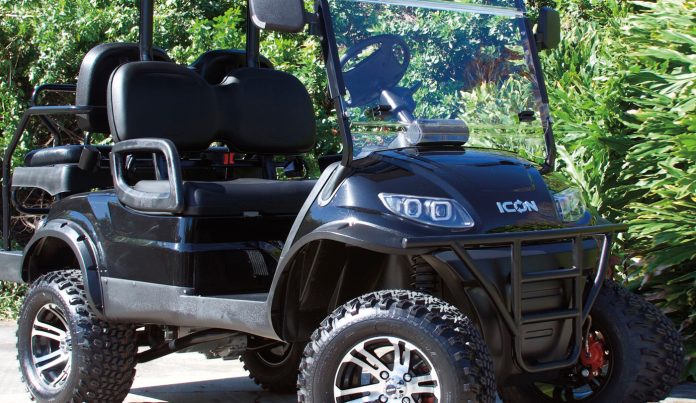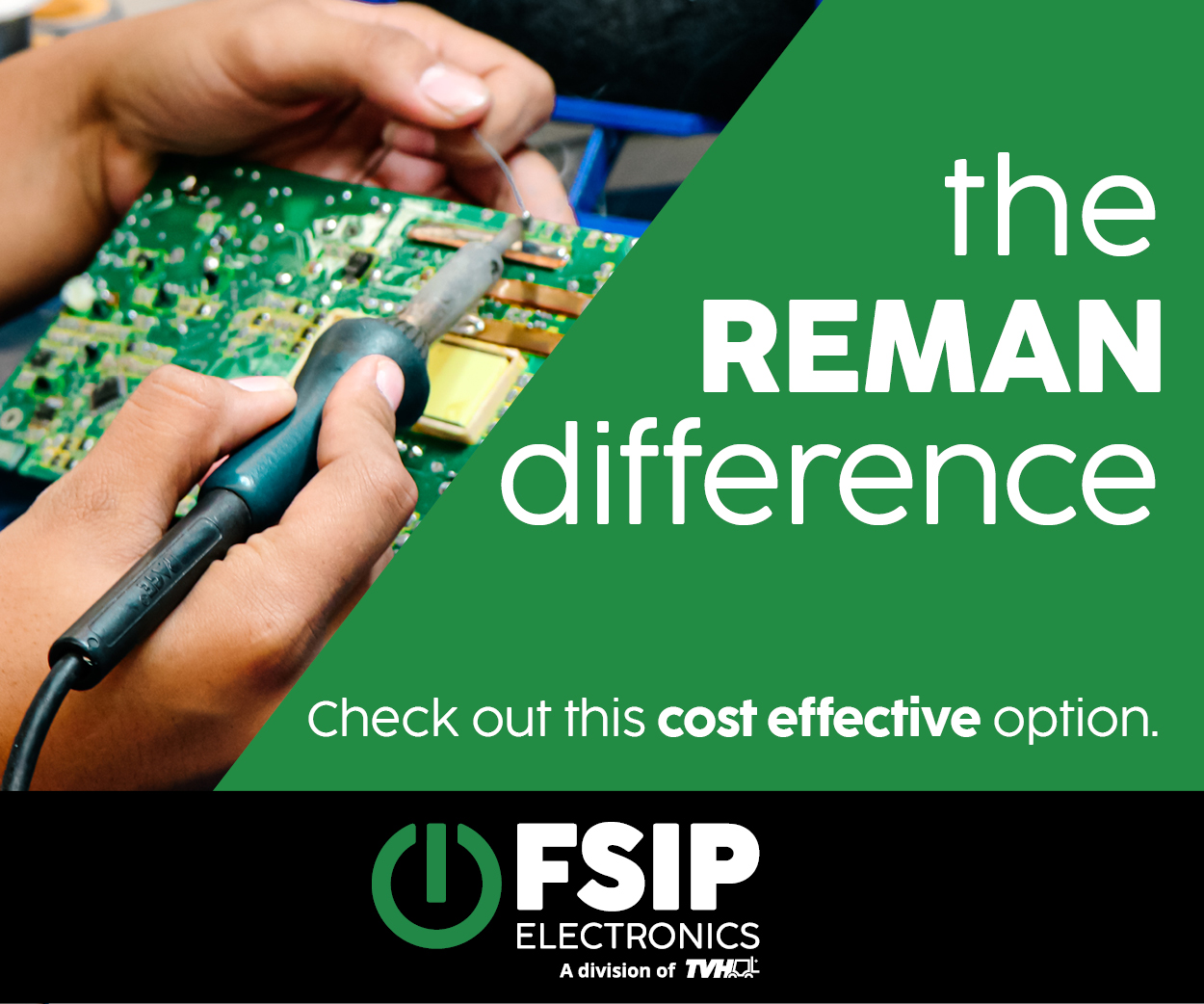Being the new kid on the block is nothing new for Roy Williams. He has been that for most of his adult life. Whether it was new home construction, mortgage financing, solar installations, lithium batteries, or golf cars, being an investor has opened many doors for him. Most times he is a passive investor, but occasionally he takes a more active “hands-on” role. ICON Electric Vehicles definitely falls into the latter category. As the majority shareholder, Williams is involved in every aspect of the company, alongside his business partner Terry Trekas. Together they have grown ICON from a 25 car per month operation to a near 400 car per month operation in less than 18 months. And they aren’t slowing down anytime soon.
“I believe there are two ways to establish a foothold in this, or any other product oriented business” said Williams. “You either design a new product from the ground up, or you take a good existing product, and you incorporate revisions that turn that good product into a great brand. That’s what we did with ICON. We looked at designing an entirely new car from the ground up, and realized that it simply wasn’t necessary. There were several existing platforms that were already really good, that just needed some fine tuning. We looked very hard at the partnership between Star EV and Eagle, and decided that finding the right strategic partner with an existing platform that we could take a step further which was the best avenue for us. So over a period of 6 months, I visited 20 different factories in 4 different countries, and found a strategic partner that was willing to not only meet our high standards, but was also willing (and able) to help us take the platform to the next level”.
In addition to targeting the right strategic manufacturing partner, Williams also had to figure out who his end user would be, and what type of dealers were most capable of reaching that audience. “Common sense dictates that as a new startup, you can’t just compete head to head with Club Car, or E-Z-GO. They are the established brands, with built-in name recognition. You can beat them on features and quality, but due to their brand recognition you still have to beat them on price, significantly. And you definitely have to be able to beat them on dealer profit margins in order to incentivize existing dealers to take on your brand. And due to strict contract language that limits what some existing dealers can or cannot sell, building the right dealer network becomes all the more difficult. Choosing the right dealers is essentially as important as the product itself”.
As for the product, Williams is extremely proud of how far ICON has come in such a short time. “When we first started, we had a pretty good car to build on. And what we have been able to accomplish with our partners, well I wouldn’t hesitate for a second to put ICON up against any other brand. We use a 4kw AC motor, Toyota controller, 4-wheel disc brakes, 4-wheel independent suspension, high-speed transaxle ratio, ALL are standard equipment on every ICON vehicle, and we recently added a new body design, LED lights with daytime running lights, and upgraded wheels and tires. We are constantly looking for ways to improve the ICON vehicle, and also the ICON brand. Because ultimately, branding matters. People want a brand they can trust.” So for Williams, there were 2 main objectives that had to be reached for ICON to become a success story. The first was building a vehicle and brand that the public would love, and the second was building the right dealer network to bring that car to the masses.
“Not every dealer out there is the right fit for us” admits Williams. “A good percentage of existing Club Car or E-Z-GO dealers are either not permitted to, or simply have no interest in adding additional brands. They have their base that will blindly buy a new Club Car every 3-5 years, and that’s who they cater to. And that’s fine. But as a new startup brand, you have to accept that you are never going to convert those buyers anyway, so it’s a fools’ errand to waste time and resources on it. What we mainly look for are existing dealers, heavily involved with the communities they operate in, with excellent customer service histories. What brands they currently sell, or previously sold, are of secondary interest to us. Many of our current dealers previously specialized in refurbishing golf course fleet carts. They would buy 40 or 50 carts at a time, put on a new body, new batteries, new tires and wheels, and maybe make a couple of thousand per unit, minus overhead and staff. What we enabled them to do was to make the same (if not higher) margin, sell their customer a brand new car with a 2-year warranty, avoid having to stock $50k worth of bodies, parts, wheels, etc., and to have their techs actually doing billable service work instead of spending their time on rehab builds. It’s a win-win-win for ICON, the dealer, and the end consumer.”
Taking pride in how far ICON has come in such a short time doesn’t mean Williams isn’t looking ahead to where ICON is going in the future. “Right now I think one of the biggest concerns most golf car buyers have is vehicle range, and how to improve it.” As the owner of NexGen Lithium Batteries, Williams is no stranger to lithium technology, and its potential benefits to the golf car industry. “I have been involved in the lithium battery industry for over a decade, and lithium is definitely something ICON has in its sights. The current cost factor of lithium batteries is the only reason it doesn’t make sense for most buyers. When you look at weight, range, failure rate, longevity, etc., lithium is obviously the best option. The only thing currently holding it back is price. And it’s something we are working on with NexGen and ICON. We have been field testing several new batteries and configurations, and we are working on ways to bring the costs down to a level that would make lithium a better fit for more consumers. One of our goals is that one day every ICON vehicle will have lithium batteries as standard equipment.”
Lithium batteries aren’t the only improvements Williams is targeting for ICON. His background in solar power is also an area he looks to make inroads with. “Right now, solar is little more than a novelty as it pertains to golf cars. It looks neat up on the roof, but the current systems simply don’t generate enough power to make a sizable difference. It’s a great conversation piece, but doesn’t really do much. So we are definitely looking at ways to improve solar output, in conjunction with our lithium program, in the hopes of one day offering standard equipment golf cars that have a 100 mile range. And sure, people might scoff at the idea of a 100 mile golf car (at a reasonable price point), but I’m sure not too many years ago people scoffed at the idea of USB ports or backup cameras on golf cars, and now they are everywhere. Sometimes you have to push the envelope a little, and that’s what we are doing with ICON. We are not just building golf cars, we are building a brand.”
























